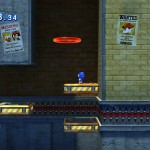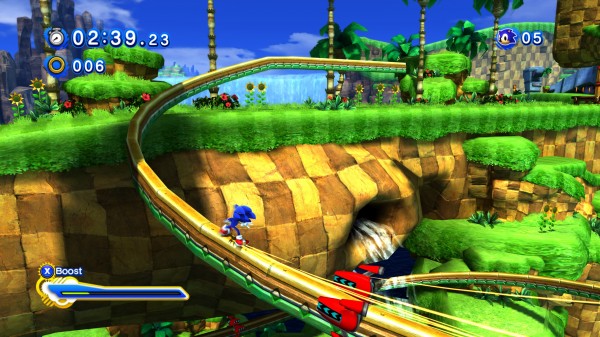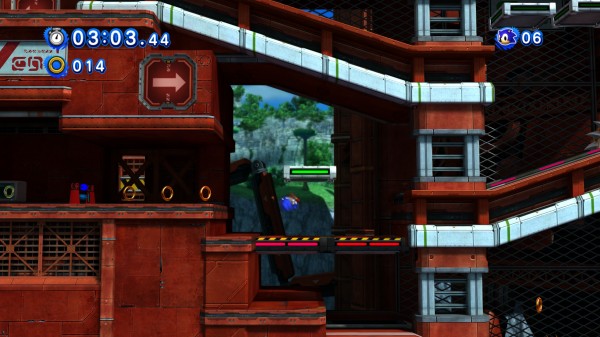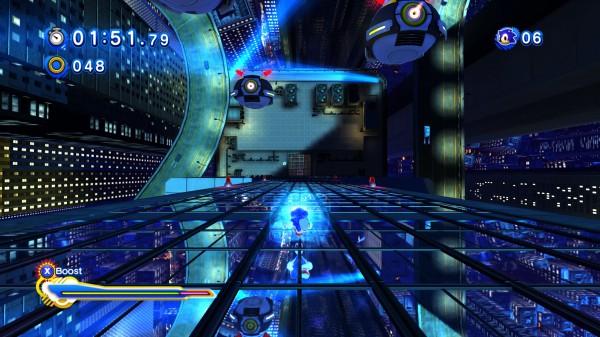
Sonic Generations review
Do I even need to say how bad Sonic games have been in recent years? It’s impossible to mention any Sonic game without bringing up his abysmal track record. While he had a bad streak with the rock-bottom 2006 Sonic The Hedgehog, followed by Sonic Unleashed and the “storybook” games, it’s hard to believe fans haven’t given up on the series. Sega aims to set everything straight with nostalgic throwbacks in the latest entry, Sonic Generations, the main selling point being the ability to play as two Sonics from their own era in their franchise’s history.
Sonic Generations doesn’t delay with the throwbacks either. As soon as you start a new game, you’re playing as classic, 16-bit, blast-processing Sonic. Everything from the music, to the gameplay, the graphics, and, of course, Sonic himself, feels just like a Genesis Sonic remade for HD systems. Once you finish the first level – which happens to be Green Hill Zone, the very first Sonic level – some evil shadow beast appears out of nowhere, then it cuts to a surprise party for modern Sonic thrown by all his “who are all these people” friends. The shadow beast appears here too, kidnaps all the party-goers, and leaves Sonic in a white purgatory where the only thing he can find is the same Green Hill Zone. Being the world’s fastest hedgehog, his first instinct is to run through it. Surprisingly, despite this level being played like the modern 3D Sonics, the nostalgia remains present. Eventually, Sonic finds Tails, meets up with his classic self, and the two Sonics go on an adventure to save time and space. No, seriously, the story isn’t much deeper than that, but considering Sonic’s recent games, it’s much welcomed.

The goal of the game is to complete all nine stages, every one of which is a remake of a memorable level from games of Sonic’s past. Personally, I felt like classic Sonic was a little underrepresented, seeing as how he only has three stages to modern Sonic’s six. You fight some bosses every now and then, also from Sonic’s past, so the game’s story is pretty straightforward. You play each level twice – once as classic Sonic and once as modern – and every third level you complete unlocks side missions for you to do. These missions have a fair amount of variety, such as beating a doppelganger to the finish, or completing a stage with one ring, but you only need to complete 9 out of the total 90 to see the game’s ending. Because of that, Sonic Generations will either be really short or really long, depending on how much you’re willing to put into it. Completing these missions gives you unlockables ranging from music to concept art, so die-hard Sonic fans (whom I shutter to think of) should be very pleased with Generations’ historic offerings.
Now let’s get to what really matters: the gameplay of each Sonic. If you’ve played any Sonic game on the Genesis, you’re already in familiar territory. As you might expect, everything is played from a 2D side-view perspective. You’ll find power-ups in retro computer monitors, and you’ll still collect loads of rings. Even Sonic’s spin dash remains intact, which can be done just by holding X, but you can still hold down and mash A if you want to – nice touch, Sega. There’s really not much more to say about it. It controls well, plays well, it’s just like Sonic from the old days. The only complaint I have is that there are no bonus stages, but I guess the side missions took precedence over them.
Modern Sonic plays, unfortunately, like his more recent games. Thankfully it’s not as buggy as previous games, but many of the same problems still persist. The biggest problem, for me, is that there simply isn’t much to the gameplay. You run on a narrow, linear path, mostly holding up on the analog stick, while sometimes hitting A to jump or auto-attack enemies and hit springs to propel you up or forward. It makes the speed aspect really smooth, but modern Sonic is simply more fun to watch than it is to play. I also had a few issues with the auto-attack – if you auto-attack with no target, you’ll burst straight ahead, and sometimes I would press the button right after the game suddenly decides I have no target, causing me to burst into spikes or bottomless pits. You can also press LB and RB to change invisible “lanes” left and right in straightforward areas. Sometimes, even though there’s plenty of room to move, you’re fenced in these lanes by invisible walls and can’t move further left and right without either pressing LB or RB, or slowing down to a near halt. Speaking of slowing down, when modern Sonic isn’t moving fast, his controls are really touchy and sloppy, almost like you’re controlling a snake. Honestly, you probably won’t come across these issues normally, but the gameplay is still pretty rudimentary.
Sonic Generations has great visuals. I wouldn’t expect anything less from Sega in terms of detail, but the colors are absolutely gorgeous, easily one of the best looking games of 2011. Even though I played the PC version to the ending, I did rent the 360 version for a little while, and I didn’t notice any considerable performance issues. Despite the graphics not changing between modern and classic Sonic, the music for each does change a bit. Each level has their original background melodies intact, but they’re mostly remixed for the opposite era’s Sonic. Classic Sonic’s music has more of a retro gaming, almost 80s pop sound to them, where modern Sonic’s music tends to be a bit more grunge rock. It doesn’t always work, but if you don’t like a certain track, you can change the music to any track you’ve unlocked from doing side missions, which is a nice option. And speaking of options, you can change the language the characters speak to a small but common variety of languages. I switched it to Italian and the voice acting was a bit more bearable, not to mention hilarious.
 Overall, Sonic Generations is the series’ saving grace for hardcore Sonic fans, to whom this is a must-buy. Retro Sonic fans may also consider picking this up, at least as a rental, as well as people who enjoy a good platformer. Unfortunately, while classic Sonic is very reminiscent of the good old days, modern Sonic’s gameplay is just too transparent for Generations to be more of a recommendation.
Overall, Sonic Generations is the series’ saving grace for hardcore Sonic fans, to whom this is a must-buy. Retro Sonic fans may also consider picking this up, at least as a rental, as well as people who enjoy a good platformer. Unfortunately, while classic Sonic is very reminiscent of the good old days, modern Sonic’s gameplay is just too transparent for Generations to be more of a recommendation.
3 out of 5
PC version addendum: If you’re going to play Sonic Generations on a PC, you should definitely use a controller. Although I didn’t play using a keyboard, I have had plenty of experience playing platformers with one, so trust me when I say a controller makes certain PC games much easier to play. Plus, like many console games ported to PC, there isn’t much in the way of graphics options. If you don’t have a dedicated graphics card, you might as well not even bother.
Categories: Reviews



0 Comments
This post has been left all alone with no comments. Don't leave it lonesome - give it some company with a comment.